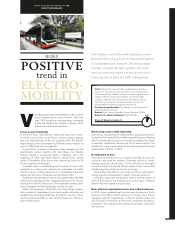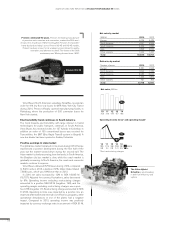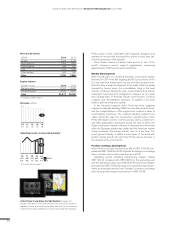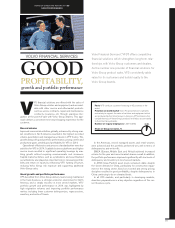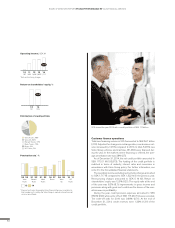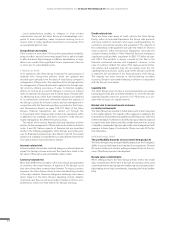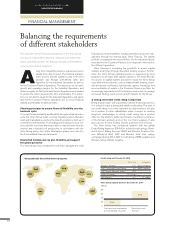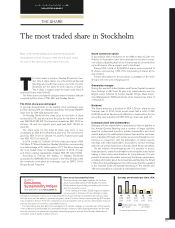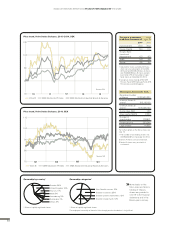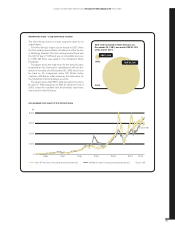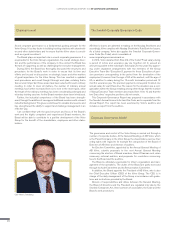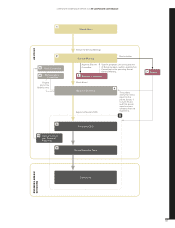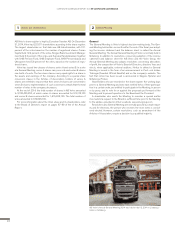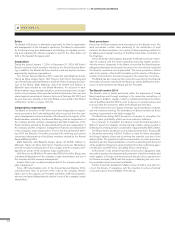Volvo 2014 Annual Report Download - page 90
Download and view the complete annual report
Please find page 90 of the 2014 Volvo annual report below. You can navigate through the pages in the report by either clicking on the pages listed below, or by using the keyword search tool below to find specific information within the annual report.
Balancing the requirements
of different stakeholders
A
long-term competitive business requires access to
capital to be able to invest. The fi nancial manage-
ment secures that the capital is used in the best
possible way through well-defi ned ratios and
objectives for the Industrial Operations as well as
for the Customer Finance Operations. The objectives on net sales
growth and operating margins for the Industrial Operations and
return on equity for the Customer Finance Operations are intended
to secure the return requirements from shareholders. The restric-
tions on net debt to equity for the Industrial Operations and equity
ratio for the Customer Finance Operations are to secure fi nancial
stability and fl exibility for debt providers.
Steering principles to ensure fi nancial fl exibility over the
business cycle
To ensure fi nancial stability and fl exibility throughout the business
cycle the Volvo Group holds a strong liquidity position. Besides
cash and marketable securities the liquidity position is built up of
committed credit facilities. The funding and lending is in local cur-
rency and the customer fi nance portfolio is matched both from an
interest and a liquidity risk perspective, in accordance with the
Volvo Group policy. For further information, please see note 4 to
the Consolidated fi nancial statements.
Diversifi ed funding sources give fl exibility and support
the global presence
The Volvo Group has centralized the portfolio man agement of all
fi nancial assets and liabilities, funding operations and cash man-
agement through the internal bank, Volvo Treasury. The liability
portfolio is separated into two portfolios, one for Industrial Opera-
tions and one for Customer Finance, to correspond to the needs in
the different operations.
Volvo Treasury is increasing the possibility to access capital
markets at all times through diversifi ed funding sources. Further-
more, the Volvo Group’s global presence is supported by bond
programs on all major debt capital markets in the world. Besides
the access to capital markets around the world, the Volvo Group
uses different instruments, such as bilateral bank funding, corpo-
rate bonds and certifi cates, hybrid bonds, agency funding as well
as securitization of assets in the Customer Finance portfolio. An
increasingly important part of the treasury work is also to manage
increased funding needs in new growth markets for the Group.
A strong and stable credit rating is important
Being a large issuer with a growing customer fi nancing business,
it is critical to have a strong and stable credit rating. The level of
the credit rating is not only important for debt investors but also
for a number of other stakeholders when it comes to creating
long-term relationships. A strong credit rating has a positive
effect on the ability to attract and fi nance customers’ purchases
of the Group’s products and on the trust from suppliers. It also
gives access to more funding sources and lower cost of funds.
The Volvo Group has contractual relations with two global
Credit Rating Agencies (CRA’s) for solicited credit ratings; Stand-
ard & Poors’ Rating Services (S&P) and Moody’s Investors Ser-
vice (Moody’s). Both S&P and Moody’s held their ratings
unchanged during 2014. S&P’s credit rating is BBB, negative and
Moody’s rating is Baa2, negative.
The objectives of the fi nancial management in the Volvo Group
is to assure shareholders long-term attractive and stable total
return, and debt providers the fi nancial strength and fl exibility to
secure proceeds and repayment.
Credit rating, on February 26, 2015
Short-term Long-term
Moody’s (Global) P-2 Baa2, negative
S&P Corporate Credit Rating A2 BBB, negative
S&P Nordic National Scale K-2 –
DBRS (Canada) R-2 (high) –
R&I (Japan) a-1 A, stable
Volvo Group liquidity position, December 31, 2014
Cash and cash equivalents
and marketable securities
Revolving credit
facilities
0
20
40
80
60 39.2
33.6
SEK bn
Geographically diversifi ed market programs
CNY
SEK
JPY
AUD
EUR
CNH
CAD
USD
BRL
BOARD OF DIRECTORS’ REPORT 2014
GROUP PERFORMANCE
FINANCIAL MANAGEMENT
86



